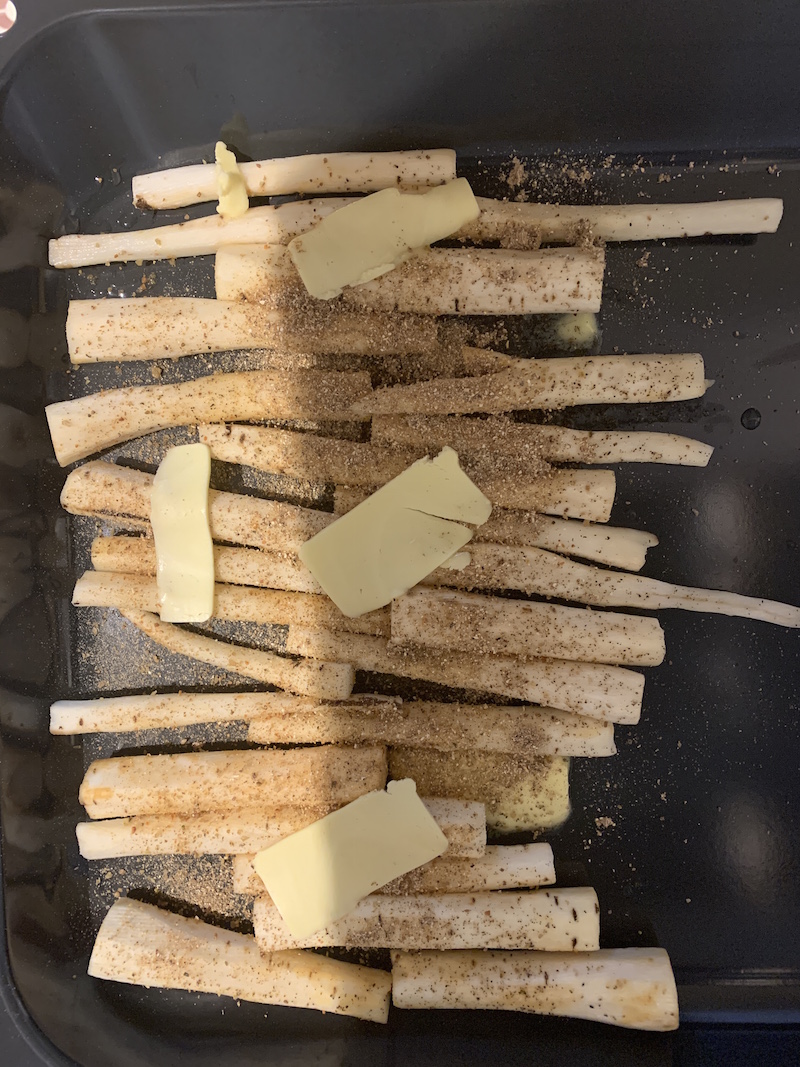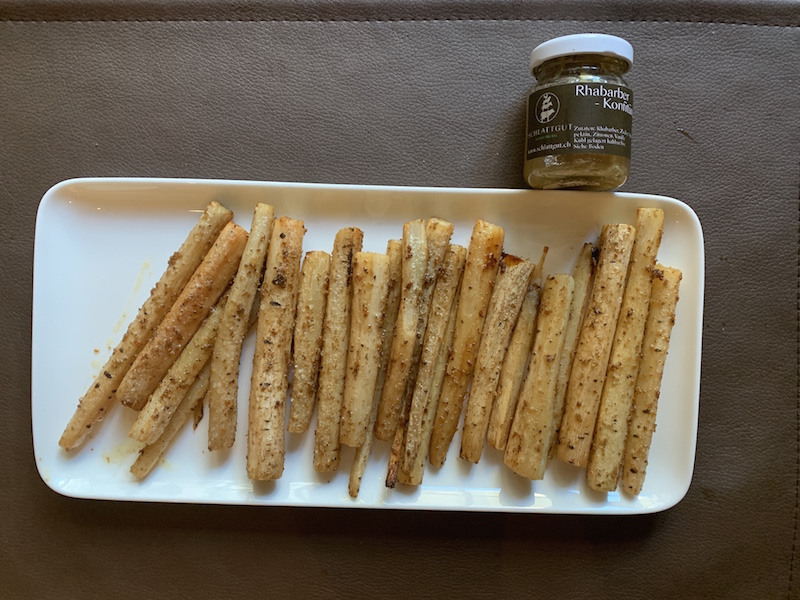Salsify: the black root known as oyster plant
Salsify is a root vegetable in season each fall and winter in Europe. In many facets it is similar to asparagus except for its hairy blackish thick peel, just not as revered by the finest chefs and certainly not elevated into a festivity-worth status as some other crops like pumpkins are. Uninviting with its appearance, salsify is not a pretty root like daikon, rather a wrinkled, rough skinned underground dweller.
In Europe salsify has been popular in Italian and British cuisine mainly. Also known as oyster plant or oyster vegetable because of its briny mineral taste reminding us of this lush seafood. To me its flavour hints on sweet liquorice, very different from carrot, closer to parsnips but no as sweet. Raw, it reminds an exotic coconut flesh, just more watery and not offering as creamy texture since it is low fat compared with the coconut.


Potential of nourishing salsify for savvy cooks
Salsify as a winter sister to white asparagus, the fine queen on the gastronomic tables in spring. In plant-based recipes salsify can work as a great mimicker of the oyster taste and some savvy chefs have exploited this fact. Black salsify is great for vegetarians. It contains as much potassium as bananas and it’s also rich in protein, inulin, a soluble fibre, iron and copper, it is thus a healthy, filling, addition into your diet.
In season from fall through the winter, I found it on the Ligurian, Piedmontese (It. scorzo nero) and Zurich (Ger. Schwarzwurzeln) farmers markets as well as in the UK. What you shall look for in terms of quality are firm, thick roots with some protective (from oxidation) dirt on them. The flesh inside must be pure milky white, not beige to brownish. You want them thick as a thumb at least since after peeling about 20% is lost.

Using kitchen gloves, salsify releases a sticky resin that stains skin and clothing, scrub the soil off ideally with a vegetable brush or under running water, then peel its black skin. I love using a sharp yet elastic (flexible) V-shaped peeler. Immediately place salsify in a bowl of water with a bit of lemon juice to prevent oxidation. Lemon or vinegar come handy at any early point before salsify is cooked, drizzle some over it when starting to roast it.
When storing it, keep the dirt on, put the roots wrapped in paper in a dark, cool place.
Young it can be used raw in salads or shaved into linguini strings. Beware, not everyone digests this root well, so it is better boiled, steamed or roasted in the oven. We eat it as a side dish as both me and my husband get a stomach ache after eating greater quantity of this delicious fall root.

My favourite recipes with salsify are
A classic oven roasted salsify (for about 45 min at 400°F ~ 200°C) with lemon and white wine until the salsify is soft and golden can be served plain as a side dish with some protein or with a béchamel sauce like white asparagus. Creamy tahini is also a superb companion to roasted or simply boiled salsify. Sprinkle with some cold pressed nut oil (or melted butter) and freshly chopped parsley and voila this is how I mainly serve this white root. A rhubarb jam also seasons simply roasted salsify well.

Like parsnips and potatoes, salsify makes a very good mashed side dish. Just add some butter and cream or plant-based alternatives (more neutral almond cream is better than sour soy, sweet rice or too exotic coconut-based fat). Boil peeled salsify until tender, then mash in a high speed blender with salt, nutmeg, pepper, pan-seared caramelised onion, butter and cream. This puree is as decadent as your best mashed roots (I also love celeriac, potatoes and parsnip mash). You can add some curry powder for an Indian kick. Adding a vegetable or chicken bouillon according to your preferred thickness will blend it into a creamy soup.
I also love these indulgent black salsify fries with hazelnut gremolata recipe at Kitchen stories. For a dairy-free version, use unsweetened coconut or hazelnut milk, even a regular water. Lemon is essential though to prevent discoloration.
Salsify makes a light gluten-free pasta such as salsify tagliatelle. Peel the salsify, shave into strips using a sharp vegetable peeler, boil until tender then add to your favorite pesto or pasta sauce. As I mentioned above, use it raw only if you tolerate well the cooked root.
Diversify your autumn diet with this humble root. It is not only nutritious, but also easy to prepare vegetable that even kids will love. Just do not show them this wrinkled crop unpeeled. The best example of an ugly vegetable made beautiful on the plate. The frog turns a princess with a bit of shaving.

